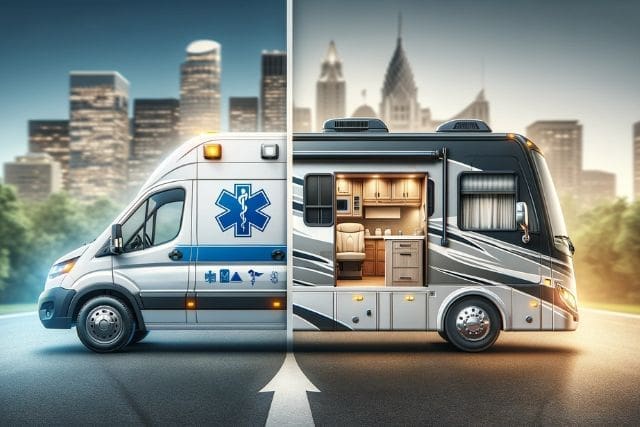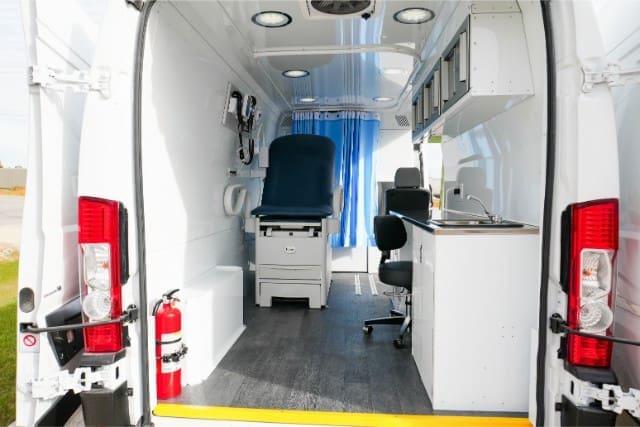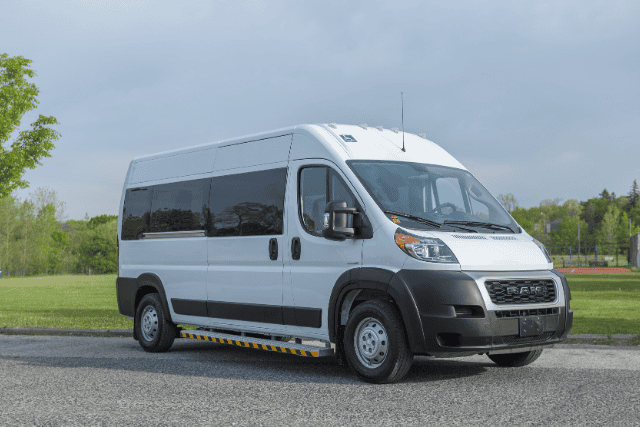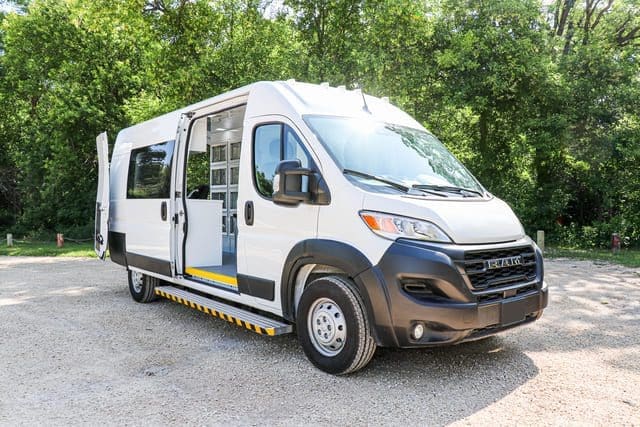Is your organization in the midst of trying to find a suitable vehicle to provide mobile healthcare around the country? Mobile medical clinic vans and full-size RVs are two options to consider. Choosing the wrong option can lead to chaos during medical visits with patients. It can also end up increasing your operating costs and reduce the overall impact of your mobile healthcare services.
At AVAN Mobility, our primary goal is to manufacture mobile medical vehicles to reduce barriers to people accessing healthcare in the U.S. We work hand in hand with organizations, communities, and partners who share our passion. Together, we’re making a positive impact on people’s lives. We tackle every challenge with our “we can” approach.
In this article, you’ll learn about the versatility of mobile medical clinic vans vs. full-size RVs. By the end of reading, you’ll have a better idea of which option is more suitable for your needs.
What are mobile medical clinic vans?
Mobile medical clinic vans, like the ones designed and manufactured by AVAN Mobility, are specialized vehicles used to provide healthcare services on the go. These vans are distinct from full-size RVs, primarily because they have a shorter wheelbase, measuring around 159 inches if they’re built on a Promaster. Let’s explore what this means and why the overall size of the vehicle, including the height, makes mobile medical clinic vans more efficient in delivering healthcare services across the United States.
Understanding the wheelbase
The wheelbase is the distance between the front and rear axles of a vehicle. In simple terms, it’s the span between the wheels. A shorter wheelbase means the distance is smaller, while a longer one, like those found in full-size RVs, is, well, longer.
Having a shorter wheelbase is a key advantage for mobile medical clinic vans for several reasons:
Maneuverability: A shorter wheelbase makes the van easier to steer and navigate. This means it can turn more sharply and get through tight corners with ease. Picture a mobile clinic van winding through narrow streets in urban areas or parking in cramped spaces; it can do this much better than a larger RV.
Accessibility: The shorter size allows these vans to reach remote or underserved areas more effectively. Think about rural communities with narrow and winding roads, where a full-size RV might struggle to access. Mobile medical clinic vans can get there, ensuring healthcare reaches even the most secluded places.
Efficiency: The compact design of mobile medical clinic vans maximizes their interior space. This translates to a well-organized clinic environment. Efficiency matters, as it helps healthcare providers serve more patients in less time.
Cost-effective: A shorter wheelbase means less fuel consumption, which can save on operational costs. Plus, these vans are easier to maintain, further reducing expenses.
If you’d like a broader look at mobile medical units, click the button below to check out our buyer’s guide.
Mobile medical clinic vans’ versatility over full-size RVs
Mobile medical clinic vans offer a range of advantages over full-size RVs due to their shorter size. Let’s look at some examples of how this versatility can benefit both the healthcare providers and the communities they serve:
Urban accessibility: In bustling cities like New York or LA with narrow streets and tight parking spaces, it’s challenging for full-size RVs to reach patients. A mobile medical clinic van, with its compact wheelbase, can effortlessly navigate urban environments, bringing healthcare directly to city dwellers.
Rural reach: Rural areas often have limited infrastructure, including narrow roads. Mobile medical clinic vans can traverse these routes, ensuring that healthcare services are accessible to people living in the countryside.
Community events: Health fairs, local festivals, and community events are great opportunities to provide medical services. The mobility and versatility of these vans make them perfect for setting up clinics at such gatherings, where full-size RVs might not fit or be as maneuverable.
Schools and senior centers: These vans can visit schools for children’s check-ups and senior centers for elderly care. Their maneuverability is a big plus in these locations.
Emergency response: During emergencies or natural disasters, quick healthcare services are crucial. Mobile medical clinic vans can easily access disaster-stricken areas, providing essential care when and where it’s needed most.
Full-size mobile medical RVs: Bigger, but not always the best choice
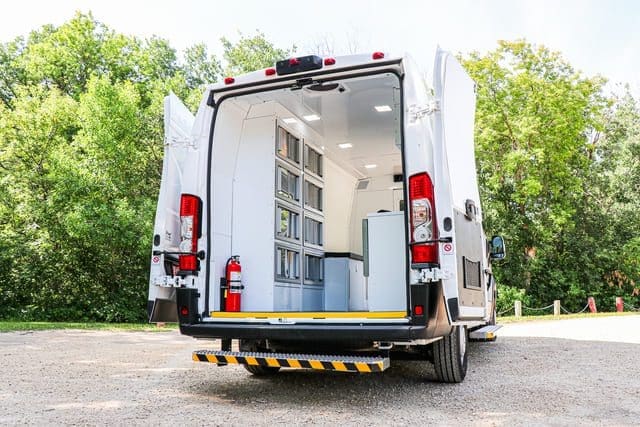
Full-size medical RVs are like the big brothers or sisters to medical clinic vans. Yes, they are bigger. But sometimes, being big has its own problems. These RVs have a much longer wheelbase than mobile medical clinic vans, and that can make some things tricky. Their wheelbase averages between 360” and 480” compared to the 159” wheelbase of mobile medical clinic vans at AVAN Mobility.
Problems with a long wheelbase
Having a long wheelbase comes with some issues:
Limitations: It’s harder to bring a long, full-size RV to many remote communities around the U.S. This places a limit on the reach of healthcare services you’d be able to provide if you choose this option.
Limited parking: Finding suitable parking spaces can be a struggle, particularly in crowded urban areas, where there may be a shortage of parking spots large enough to accommodate these oversized vehicles.
Turning radius issues: Maneuvering through sharp turns or U-turns in smaller spaces is challenging in a full-size RV. This can potentially lead to delays and difficulties in reaching patient locations.
Full-size RVs’ lack of versatility
One of the biggest challenges of full-size RVs is their mobility. If the main goal of your mobile healthcare program is to reach patients in crowded areas, you’ll have a tougher time with that.
Think about a place like New York City, with crowded streets and tall buildings. In such a place, a full-size medical RV can face real mobility issues. Trying to navigate these narrow streets and find a parking spot for the RV is like trying to fit a giant puzzle piece into a space meant for a much smaller one.
The confined spaces make it hard to provide healthcare services effectively. Unfortunately, this can cause delays and frustrations for both the healthcare team and the patients waiting to be seen. It’s like trying to drive an elephant through a maze designed for mice, and it’s just not a good fit. Smaller vans have the advantage of navigating through streets to reach clients, unlike larger vehicles that are more limited to stopping in parking lots.
Remote areas
Full-size RVs can have a hard time getting to remote areas. These areas might have tiny or twisty roads that are tricky for long vehicles to drive on. This means that people who live in these areas won’t have an easy time getting the healthcare they need.
Think about a small town in the U.S. nestled in the mountains. The roads there are like winding roller coasters, curving around the hills and valleys. Now, imagine a big medical RV trying to reach that town. It’s like a giant trying to fit through a tiny door. The RV struggles on those twisty roads, and it might not even make it. So, people in that mountain town would have a tough time getting the healthcare they need because the RV can’t easily get to them.
Maintenance
When considering the size of the vehicle, it’s worth noting that larger RVs often come with more intricate medical equipment, leading to increased maintenance needs. In contrast, a smaller mobile medical van promotes a simpler layout and function, making on-the-go maintenance more manageable. Opting for a compact design not only streamlines operations but also reduces the demand for extensive service, offering a practical solution for healthcare on wheels.
Delays
Full-size RVs can deal with delays in reaching their target area. When there’s an emergency, like a big storm or disaster, the large medical RVs might not arrive quickly enough. This is because they’re big and have slower maneuverability. So, giving healthcare fast during emergencies becomes harder. It’s like trying to run a race with heavy shoes on – you can’t go as fast as you need to.
Picture a little mountain town hit by a big snowstorm. The roads turn icy and become tough to drive on. People need help, but the regular full-size medical RV can’t get through those slippery, winding roads. They have to wait a long time for the medical team to arrive if it does at all.
But here’s where our AVAN Mobility Mobile Clinic Van comes in. With the Trail Edition Upgrade, you can reach people even in wintery conditions. So, in this snowy scenario, your van can get to those folks faster. That’s the difference our Mobile Clinic Van can make during emergencies in problematic areas.
Cost differences between mobile medical clinic vans vs. full-size RVs
It’s important to know that full-size medical RVs cost more than smaller mobile medical clinic vans. This can be a problem if your organization is working with a limited budget.
The price for a full-size RV typically falls between $199,000 to $375,000 or even higher. That’s quite a hefty expense. In comparison, mobile medical clinic vans offer a more budget-friendly solution, allowing healthcare organizations to provide essential services without the same financial burden.
The price for a mobile medical clinic van ranges between $125,000 to $225,000.
Your path forward with AVAN Mobility
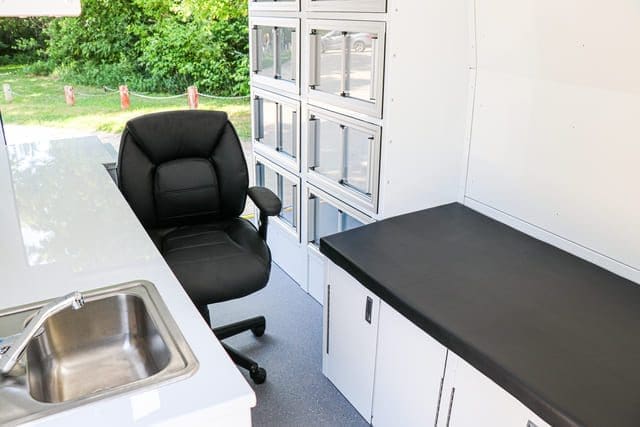
You came to this article looking for more information on mobile medical clinic vans vs. full-size RVs.
If you’ve made it this far, you now know more about the versatility that mobile medical clinic vans have over full-size RV clinics. You can use this information to make a more informed decision on which vehicle to choose.
We’re all about answering your questions at AVAN Mobility. We want you to be confident in your decision so you can provide mobile healthcare to as many people as possible.
At this point, you should take a look at our guide on applying for grants for mobile health clinics. This article provides some helpful advice on how to apply for grants.
You should also take a look at our article on mobile medical van customization. You’ll have a better idea of what you can put in your van after reading it.
